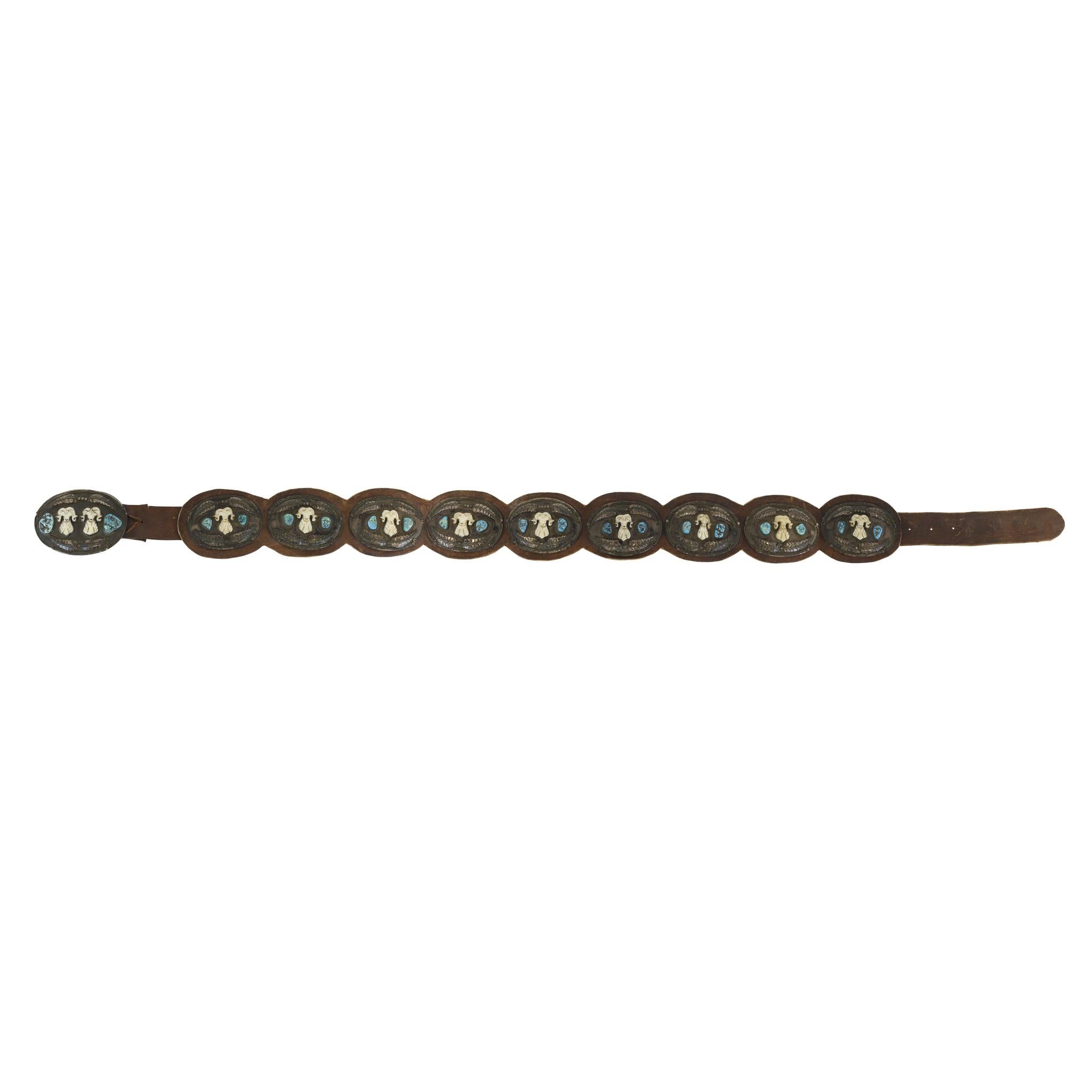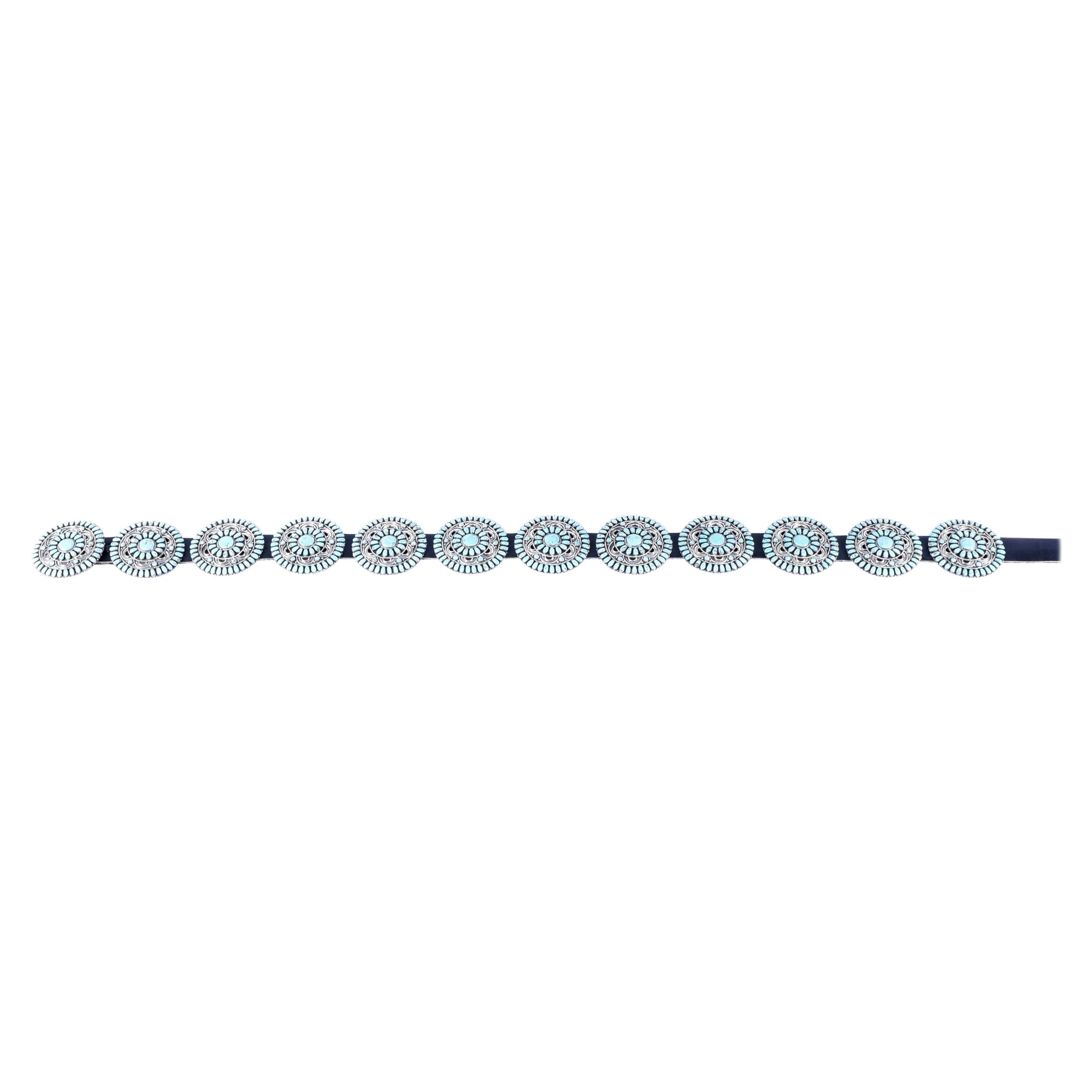Items Similar to Victorian Trembler Spring Hat Pin with Amethyst Molded Glass and Crystal ca 1900
Want more images or videos?
Request additional images or videos from the seller
1 of 8
Victorian Trembler Spring Hat Pin with Amethyst Molded Glass and Crystal ca 1900
About the Item
A necessity during the Victorian Era, hat pins not only balanced precarious hats atop piles of hair but also moonlighted as weapons against overzealous gentlemen. Though teetering hats are no longer de rigeur, glorious century-plus-old pins such as these can be pierced through modern hats as statement accessories or even arranged in the hair like chopsticks. This extraordinary example features an impressive ¾” molded amethyst glass finial with seven 5mm crystals atop a trembler spring to create an accessory that stands on its own.
7” hat pin with trembler stem; ½” molded amethyst glass floral finial surrounded by seven crystal “petals.”
material: brass, silver, molded amethyst glass, crystals
noteworthy: gently clean with damp cloth
repairs: none
condition: very good with gently curved stem
measurements:
length: 6” (stem), ¾” (spring), ¼” (finial)
finial diameter: ¾”
signature: no signature present
- Metal:
- Stone:
- Stone Cut:
- Dimensions:Diameter: 0.75 in (19.05 mm)Length: 7 in (177.8 mm)
- Style:
- Place of Origin:Unknown
- Period:
- Date of Manufacture:1900
- Condition:Polished. Wear consistent with age and use. Gently curved stem.
- Seller Location:Tucson, AZ
- Reference Number:
About the Seller
5.0
Platinum Seller
These expertly vetted sellers are 1stDibs' most experienced sellers and are rated highest by our customers.
Established in 2005
1stDibs seller since 2017
348 sales on 1stDibs
Typical response time: <1 hour
- ShippingRetrieving quote...Ships From: Tucson, AZ
- Return PolicyThis item cannot be returned.
More From This SellerView All
- Victorian Art Nouveau Extra Long Silver Globe Hat Pin with Brass Details, 1900sLocated in Tucson, AZA necessity during the Victorian Era, hat pins not only balanced precarious hats atop piles of hair but also moonlighted as weapons against overzealous gentlemen. Though teetering ha...Category
Antique Early 1900s Unknown Art Nouveau More Objets d'Art and Vertu
MaterialsSilver, Brass
- Victorian Nouveau Gold Fill Trembler Hat Pin w Garnet Molded Glass Flower, 1900sLocated in Tucson, AZA necessity during the Victorian Era, hat pins not only balanced precarious hats atop piles of hair but also moonlighted as weapons against overzealous gentlemen. Though teetering ha...Category
Antique Early 1900s Unknown Art Nouveau More Objets d'Art and Vertu
MaterialsGold
- Victorian Nouveau Brass Opaline Molded Glass Flower Hat Pin with Crystals, 1900sLocated in Tucson, AZA necessity during the Victorian Era, hat pins not only balanced precarious hats atop piles of hair but also moonlighted as weapons against overzealous gentlemen. Though teetering ha...Category
Antique Early 1900s Unknown Art Nouveau More Objets d'Art and Vertu
MaterialsCrystal, Brass
- Victorian Aesthetic Movement Moorish Brass Extra Long Teardrop Hat Pin, 1900sLocated in Tucson, AZA necessity during the Victorian Era, hat pins not only balanced precarious hats atop piles of hair but also moonlighted as weapons against overzealous gentlemen. Though teetering ha...Category
Antique Early 1900s Unknown Aesthetic Movement More Objets d'Art and Vertu
MaterialsBrass
- High Victorian Faceted Jet Hat Pin with Sterling Silver Stem, 1890sLocated in Tucson, AZA necessity during the Victorian Era, hat pins not only balanced precarious hats atop piles of hair but also moonlighted as weapons against overzealous gentlemen. Though teetering ha...Category
Antique 1890s Unknown High Victorian More Objets d'Art and Vertu
MaterialsSterling Silver
- Late Victorian Extra Long Rhinestone Pavé Silver Hat Pin, 1890sLocated in Tucson, AZA necessity during the Victorian Era, hat pins not only balanced precarious hats atop piles of hair but also moonlighted as weapons against overzealous gentlemen. Though teetering ha...Category
Antique 1890s Unknown Late Victorian More Objets d'Art and Vertu
MaterialsCrystal, Silver
You May Also Like
- Custom Made Enameled Belt BuckleLocated in Stamford, CTBeautifully made, one of a kind, brass and red enameled belt buckle. It could be used as a large necklace pendant as well.Category
Vintage 1960s American More Jewelry
- Custom Made Enameled Belt BuckleLocated in Stamford, CTStunning one of a kind brass buckle enameled in a raspberry pink tone.Category
Vintage 1960s American More Objets d'Art and Vertu
- United States Army Model 1872 Dress Cap BadgeLocated in Mount Kisco, NYCirca 1872, this antique brass U.S. Army Dress Cap Badge is a rare and unusual find. The battalion marking, 258, is proudly displayed across the eagle's ches...Category
Antique 1870s American More Objets d'Art and Vertu
MaterialsBrass
- Navajo Walrus Ivory and Turquoise Concho BeltBy NavajoLocated in Coeur d Alene, IDCarved ivory bighorns with Blue Kingman Mine turquoise. Wonderful patina. Original leather; nine conchos total. Signed A.J.M. PERIOD: After 1950 ORIGIN: Navajo, Southwest SIZE: Total belt length 56"; buckle 3 1/2" x 5"; conchos 3" x 4" The word “concho” sometimes spelled “concha”, comes from the Spanish word meaning shell. Some of the first “conchos” were made of melted silver dollars and resembled a shell. Concho belts reportedly began appearing in Navajo country in the late 1860s. Other Native Americans including Zuni and Hopi also made traditional concho belts before long. Concho belts can cost into the thousands of dollars depending upon the craftsmanship, amount of silver, rarity of turquoise and stones used. Belts in the upper end of the price scales are usually made before the turn of the century. Buyers should deal with reputable dealers as many fakes and look-a-likes exist. A well-made belt with age to it will fetch a bigger premium and hold its value better. The earliest concho belts are now referred to as “First Phase” belts. This style of belt was made before Native silversmith had learned much about soldering. The conchos were hammered out from melted coins, cut, and filed into shape, engraved and a diamond shape slot was cut out of the middle of the concho, with a bar left across the center of the diamond shaped slot for the leather loop. Conchos that required no soldering are generally thought to be made from 1860-1880. Second phase conchos were done 1890-1900s in which silversmith began to solder. Third phase conchos is when you start to see the “butterfly” or “bow” appear between conchos and the use of turquoise as an adornment. A butterfly (bow) is a smaller concho in between bigger conchos. A belt with butterflies...Category
Vintage 1950s American Native American More Jewelry
MaterialsTurquoise, Sterling Silver
- Navajo Turquoise Concho BeltBy NavajoLocated in Coeur d Alene, IDNavajo concho belt with rectangular turquoise slabs, surrounded by small stones. Signed RS. The turquoise is from the Kingman Mine in Arizona. Marked ster...Category
Vintage 1950s American Native American More Jewelry
MaterialsTurquoise, Sterling Silver
- Navajo Needlepoint Turquoise Concho BeltBy NavajoLocated in Coeur d Alene, IDSigned LMB. Marked sterling; 11 conchos total. PERIOD: After 1950 ORIGIN: Navajo, Southwest SIZE: Total Belt Length 62 1/2" Leather; conchos 2 1/4"D The word “concho” sometimes spelled “concha”, comes from the Spanish word meaning shell. Some of the first “conchos” were made of melted silver dollars and resembled a shell. Concho belts reportedly began appearing in Navajo country in the late 1860s. Other Native Americans including Zuni and Hopi also made traditional concho belts before long. Concho belts can cost into the thousands of dollars depending upon the craftsmanship, amount of silver, rarity of turquoise and stones used. Belts in the upper end of the price scales are usually made before the turn of the century. Buyers should deal with reputable dealers as many fakes and look-a-likes exist. A well-made belt with age to it will fetch a bigger premium and hold its value better. The earliest concho belts are now referred to as “First Phase” belts. This style of belt was made before Native silversmith had learned much about soldering. The conchos were hammered out from melted coins, cut, and filed into shape, engraved and a diamond shape slot was cut out of the middle of the concho, with a bar left across the center of the diamond shaped slot for the leather loop. Conchos that required no soldering are generally thought to be made from 1860-1880. Second phase conchos were done 1890-1900s in which silversmith began to solder. Third phase conchos is when you start to see the “butterfly” or “bow” appear between conchos and the use of turquoise as an adornment. A butterfly (bow) is a smaller concho in between bigger conchos. A belt with butterflies and sometimes turquoise would be from the early 1900s – 1930s. The timelines may slightly differentiate depending upon who you ask. Natives first had concho belts for personal use only, but around the turn of the last century, tourist demand had kicked in and a new outlet emerged. belts & buckles jewelry silver belts conchos navajo needlepoint southwest turquoise...Category
Vintage 1950s American Native American More Jewelry
MaterialsTurquoise, Sterling Silver
Recently Viewed
View AllMore Ways To Browse
Glorious Antique Jewelry
Victorian Art Brass
Antique Amethyst Glass
Brass Jewlery Stand
Victorian Hair Art
Antique Brass Hat Stand
Moonlight Jewelry
Silver Hair Pin
Antique Victorian Hair Art
Antique Amethyst Pin
Antique Jewelry Molds
Victorian Hair Pins
Victorian Hair Pin
Antique Long Stem Glasses
Weapon Jewelry
Antique Hat Molds
Antique Hat Mold
Victorian Amethyst Pin





